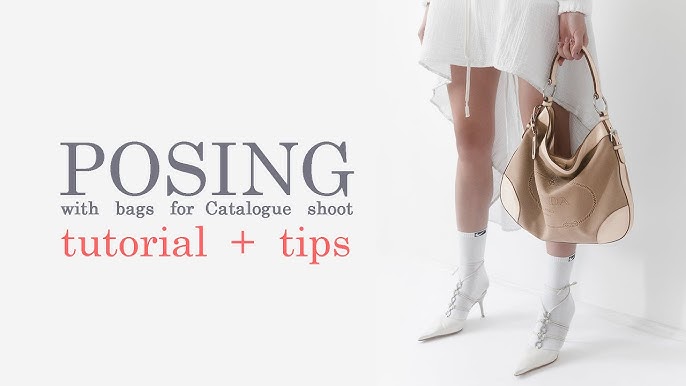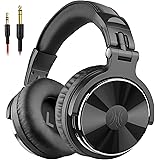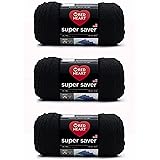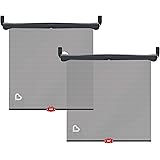For effective catalog modeling, focus on accurate data organization and user-friendly navigation. Highlight key products and ensure consistent formatting.
Creating a successful catalog requires careful planning and execution. Start by organizing your data meticulously to ensure accuracy and ease of use. This helps customers find what they need quickly. Consistent formatting across all product listings enhances readability and professionalism.
High-quality images and concise, informative descriptions are crucial. Use clear categories and subcategories to streamline navigation. Keep the design clean and uncluttered to maintain focus on the products. Regularly update the catalog to reflect new inventory and remove discontinued items. These steps improve user experience and boost your catalog’s effectiveness in driving sales.

Introduction To Catalog Modeling
Catalog modeling showcases products in catalogs. Models wear or use the products. This helps customers see how items look. Catalogs can be printed or online. Good catalog modeling can boost sales and brand image.
Role Of Models
Models are key in catalog shoots. They help bring products to life. They showcase clothes, accessories, or other items. Models need to fit the brand’s image. They should look natural and confident.
Importance Of Posing
Posing is crucial in catalog modeling. Good poses highlight the product. They make clothes look appealing. Models should practice different poses. They need to know their best angles. Posing should look effortless and natural.
| Aspect | Importance |
|---|---|
| Model Selection | Fits brand image |
| Posing | Highlights products |
| Confidence | Boosts appeal |
Here are some quick tips for catalog models:
- Practice poses
- Know your best angles
- Stay confident
- Fit the brand’s image
Choosing The Right Model
Selecting the perfect model for your catalog can make or break its success. The right model showcases your products effectively, boosting customer engagement and sales. Here are some essential tips for choosing the right model.
Body Types
Diverse body types resonate with a broader audience. Ensure your catalog includes models of various sizes and shapes. This approach helps customers visualize themselves in your products.
Consider using a mix of petite, plus-size, and athletic models. This diversity appeals to customers with different body types. They feel represented and more likely to purchase.
Facial Expressions
Facial expressions play a crucial role in catalog modeling. Models with engaging and natural expressions create a connection with potential buyers. Their expressions should align with the product’s mood and style.
Use models with a range of expressions, from smiles to serious looks. This variety helps convey different product emotions. For example, a casual outfit may benefit from a relaxed smile, while formal wear might need a sophisticated expression.
Consistency in expressions across similar products enhances the catalog’s professional look. It also makes the browsing experience more enjoyable for customers.
| Body Type | Examples |
|---|---|
| Petite | 5’4″ and below |
| Plus-Size | Size 14 and above |
| Athletic | Muscular build |
- Use diverse body types.
- Choose models with engaging expressions.
- Maintain consistency in facial expressions.
Mastering Basic Poses
Mastering basic poses is crucial for any catalog model. It ensures you look your best and highlight the products effectively. This section will guide you through some essential poses to help you shine in your modeling career.
Standing Poses
Standing poses are foundational in catalog modeling. They show full-body shots and highlight the product from different angles.
- Natural Stance: Stand with feet shoulder-width apart. Keep your shoulders relaxed. Smile naturally.
- Weight Shift: Shift your weight to one leg. It creates a relaxed look. Keep your other leg slightly bent.
- Hand Positions: Place hands naturally. One hand on the hip or both arms hanging loose. Avoid stiff arms.
Sitting Poses
Sitting poses provide variety and can make clothing look more dynamic. They are great for close-up shots.
| Pose | Description |
|---|---|
| Edge Sit | Sit on the edge of the chair. Keep your back straight. Place hands on your lap or by your sides. |
| Cross-Legged | Cross your legs at the ankles. Keep one arm on the back of the chair. The other hand on your knee. |
| Lean Back | Lean back slightly. Place one arm on the back of the chair. Let the other hand rest on your thigh. |
Remember, confidence is key in both standing and sitting poses. Practice regularly to find what works best for you.
Advanced Posing Techniques
Mastering advanced posing techniques can elevate your catalog modeling. These techniques bring energy and engagement to your photos.
Dynamic Poses
Dynamic poses add movement to your shots. They make the model look lively and interesting.
- Action Poses: These include walking, running, or jumping. They add a sense of motion.
- Contrapposto Stance: This involves shifting weight to one leg. It creates a natural, relaxed look.
- Twisting: A slight body twist can highlight the outfit. It adds depth and dimension.
Interactive Poses
Interactive poses involve engaging with props or the environment. These poses add context and storytelling to your images.
- Using Props: Holding or interacting with objects. This makes the scene relatable.
- Environmental Interaction: Leaning against a wall or sitting on a bench. It integrates the model into the scene.
- Eye Contact: Looking directly into the camera. This creates a connection with the viewer.
Using Props Effectively
Props can bring a catalog to life. They add context and interest. Using the right props can enhance your product’s appeal. It’s crucial to use them effectively.
Common Props
Some props are used frequently in catalog modeling. These include:
- Furniture
- Plants
- Books
- Accessories
- Textiles
Furniture can set the scene for home products. A cozy chair or elegant table can highlight the items. Plants add a touch of nature. They can make the scene feel fresh and vibrant. Books give a sophisticated look. They work well with office or study-related products. Accessories like lamps or vases can add style. Textiles such as rugs and throws bring warmth and texture.
Creative Uses
Props are not just for decoration. They can tell a story. Here are some creative ways to use props:
- Interactive Props: Props that the model can use or touch. This adds realism.
- Themed Props: Match props with seasons or holidays. This makes the scene relevant and timely.
- Unexpected Props: Use unusual items to catch attention. This can make the catalog stand out.
- Layered Props: Combine multiple props for a rich look. This adds depth and interest.
An example of interactive props could be a model holding a coffee cup. For themed props, you might use pumpkins for a fall collection. Unexpected props could be a vintage bicycle in a modern living room. Layered props might include books, plants, and a lamp together.

Lighting And Angles
Lighting and angles are crucial in catalog modeling. The right lighting highlights product features. Proper angles capture the best views. Together, these elements create stunning catalog images that attract customers.
Natural Light
Natural light gives a soft and realistic look. It is great for outdoor shoots or near windows. Use the golden hour for the best results. This is the time shortly after sunrise or before sunset. The light is warm and diffused.
Position the model so the light falls evenly. Avoid direct sunlight to prevent harsh shadows. Use a reflector to bounce light and fill shadows. Here is a simple table for common natural light setups:
| Time of Day | Lighting Effect |
|---|---|
| Early Morning | Soft and warm |
| Midday | Bright and harsh |
| Golden Hour | Warm and diffused |
Studio Light
Studio light offers complete control. You can adjust intensity, direction, and color. Use softboxes for even and soft light. They reduce harsh shadows.
Three-point lighting is a common setup:
- Key Light: This is the main light source. Place it at a 45-degree angle to the model.
- Fill Light: This light softens shadows created by the key light. Position it on the opposite side of the key light.
- Back Light: This separates the model from the background. Place it behind the model, aimed at the back.
Experiment with angles to find the best look. High angles can make the model appear smaller. Low angles can make them look taller and more powerful. Side angles add depth and dimension. Keep the camera steady and use a tripod if needed.
Wardrobe And Styling
Wardrobe and styling are crucial in catalog modeling. The right outfit and accessories can make a big difference. This section covers tips on outfit selection and accessories to enhance your look.
Outfit Selection
Choosing the right outfit is essential. Consider the type of catalog. Seasonal catalogs need different outfits.
- Spring/Summer: Light fabrics, bright colors.
- Fall/Winter: Warm fabrics, deep colors.
Fit is key. Clothes should fit well and flatter your shape. Avoid baggy or too tight outfits.
Accessories
Accessories complete the look. They add personality and style. Choose accessories that match the outfit.
- Jewelry: Simple pieces for a clean look.
- Scarves: Add color and texture.
- Bags: Match the outfit’s style.
Balance is important. Don’t over-accessorize. One or two accessories are usually enough.
Posture And Expression
Effective catalog modeling hinges on two crucial elements: posture and expression. These components can make or break a photo. They convey the right message to potential buyers. Let’s dive into the details.
Confident Posture
A confident posture can transform an ordinary photo into a captivating one. Here are some tips to achieve it:
- Stand tall: Keep your back straight and shoulders relaxed.
- Balanced weight: Distribute your weight evenly on both feet.
- Engage your core: It helps to maintain a strong stance.
Each of these elements contributes to a confident and poised look. This sends a positive message to viewers.
Natural Expressions
Natural expressions play a vital role in catalog modeling. They make the product more relatable. Follow these tips to achieve the best results:
- Relax your face: Avoid stiff or forced smiles.
- Think happy thoughts: Genuine emotions reflect in your eyes and mouth.
- Interact with the product: Show how it feels or functions.
These tips help in creating authentic and appealing expressions. They ensure the photos resonate with the audience.
| Posture Tips | Expression Tips |
|---|---|
| Stand tall and balanced | Relax your face |
| Engage your core | Think happy thoughts |
| Distribute weight evenly | Interact with the product |
Working With Photographers
Working with photographers is a key part of catalog modeling. The right collaboration ensures high-quality images that showcase products effectively. Here are some tips to enhance your experience with photographers.
Communication
Effective communication is essential. Start by discussing the project details clearly.
- Set clear goals for the shoot.
- Discuss the types of shots needed.
- Share your vision and style preferences.
Use simple language. Avoid jargon to prevent misunderstandings. Confirm all details through email to have a written record.
Feedback
Feedback helps improve the outcome. Provide constructive comments during and after the shoot.
- Review shots regularly during the session.
- Highlight what works well.
- Suggest changes if needed.
Be polite and specific. This helps the photographer understand your needs. Always thank them for their effort and time.
Final Touches In Editing
The final touches in editing can make your catalog shine. Proper editing ensures every detail looks perfect. This step can transform your catalog from good to great.
Retouching Tips
Retouching is crucial for catalog modeling. Here are some quick tips:
- Remove blemishes to make skin look smooth.
- Adjust lighting to highlight key features.
- Enhance colors to make the catalog vibrant.
- Sharpen details for a crisp, clear image.
Retouching should be subtle. Overdoing it can make the photo look fake. Stick to minor adjustments for a natural look.
Maintaining Authenticity
Maintaining authenticity is important in catalog modeling. Follow these guidelines:
- Avoid excessive retouching. Keep the model’s natural features.
- Show real textures of fabrics and products.
- Use consistent lighting across all photos.
- Show diverse models to appeal to a wide audience.
Authenticity builds trust with your audience. It makes your catalog relatable and genuine.
Summary Of Key Tips
| Retouching Tips | Maintaining Authenticity |
|---|---|
| Remove blemishes | Avoid excessive retouching |
| Adjust lighting | Show real textures |
| Enhance colors | Use consistent lighting |
| Sharpen details | Show diverse models |
Remember, the goal is to create a catalog that is both appealing and authentic. Proper retouching combined with maintaining authenticity will result in a stunning catalog.
Frequently Asked Questions
How To Be A Catalog Model?
To be a catalog model, build a strong portfolio. Sign with reputable agencies, maintain a fit appearance, and practice posing. Network with industry professionals and attend casting calls regularly.
How Much Money Do Catalog Models Make?
Catalog models make between $100 to $1,500 per day. Rates vary based on experience, location, and client.
How Tall To Be A Catalog Model?
Catalog models typically need to be 5’7″ to 6’0″ tall. Agencies often prefer this height range.
How To Become A Catalog Model For Target?
To become a catalog model for Target, start by building a professional portfolio. Contact modeling agencies with Target connections. Attend open casting calls and submit applications on Target’s website. Maintain a professional online presence.
Conclusion
Mastering catalog modeling enhances product visibility and boosts sales. Implement these tips for a professional and polished catalog. Consistency, quality imagery, and strategic layouts are key. Keep refining your approach and watch your results improve. Start today and elevate your catalog to new heights.




















